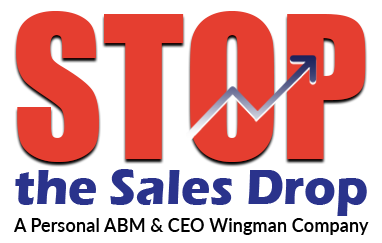Look at the growth curve of your business over the last three years before C-19 hit. What’s it measuring? Whether you designed it to track revenue, profits, share price, employees or something else, every growth curve measures the same thing … change over time.
Having grown our business through each of the economic downturns in the last 30 years, we have come to understand that, “Growth is the mastery of change.” Mastery, in this context, is not just about winning more customers than you lose or winning bigger and losing smaller over time. Mastery is about making growth more predictable and repeatable, regardless of
what the economy and markets are doing around you.
Every mid-market business or division has experience with change, but few are able to cultivate the mastery required to consistently transform change into growth. For this to happen, change must be welcomed by leaders and growth must become a cultural mandate understood by and built into the role of every employee in the organization.
Where does it all begin?
With the leaders, people and systems that form the front lines of every growth culture — your sales and customer-facing teams.
What does it take to secure the front lines of a sustainable growth culture?
Start by identifying and eliminating any signs of the following three barriers:
Barrier #1 – Customer Misalignment
Do your sales and customer-facing teams have a shared view of the customer? How often do you see signs of a disconnect? How does the mindset of people who acquire new customers compare to the mindset of those responsible for delivering, expanding and retaining existing customers? Do your sales and customer-facing teams admire or tolerate one another? Do they operate in a highly collaborative and effective way, or are they disconnected and siloed?
While answers to these questions are rarely black and white, meaningful misalignment is the rule in most businesses, by about 5 to 1, and the odds are worse coming out of an economic crisis. Despite being common across so many businesses, operating this way is not the norm and should not be accepted.
When sales and customer-facing teams cultivate a shared customer-centric mindset, deal values grow, win rates rise, sales cycles shrink, and customer experiences improve. Securing big gains in effectiveness means revenues can grow by 21%-46% within just one sales cycle. When rebuilding your growth culture, addressing customer misalignment ensures everyone is on the same page will generate important early wins and demonstrates to everyone that change is possible. With this first barrier removed, now you’re ready to preserve and stabilize early gains.
Barrier #2 – Team Underdevelopment
How often do your sales and customer-facing teams receive professional development? Are you able to isolate the gaps in each team member’s capabilities and deliver the training they need? Do your sales and customer-facing teams share common skills and methodologies, or do they operate as independent /siloed entities? How often do your teams adjust to new customer behaviors? Do you have the data required to restructure your teams and ensure the right people are in the right roles?
When rebuilding your growth culture, initial gains from addressing customer misalignment (barrier #1) disappear as fast as they are earned when attention is not given to the structure and professional development of sales and customer-facing teams.
Addressing team underdevelopment not only stabilizes early successes, it strengthens the core values and norms that legitimize your new growth culture. With barriers #1 and #2 removed, now you are ready to scale your business and keep your foot on the gas.
Barrier #3 – Cultural Sabotage
Are your sales and customer-facing teams living their new growth culture every day, or sabotaging hard-fought gains? Are team members committed to holding each other to higher organizational standards, or is their commitment optional?
Imagine an athlete who has access to the best resources available and chooses not to use them. How likely are they to perform to their potential? Extend this behavior across a team or an entire organization. When rebuilding your growth culture, it’s important to make a commitment to growth, but you must also be able to expect your leaders, people and systems to follow-through. Without it, all the money and talent in the world won’t prevent your organization from falling short of its potential and the size of your sales and revenue rebound.
When sales and customer-facing teams follow-through, they outpace competitors who don’t by 400%, on average. And, this massive growth gap persists even when entering and exiting a recession. Reinforcing what works, trusting the process, avoiding distractions and relentless execution is all it takes to complete the process.
Now is the time to prepare for growth. Now is the time to prepare for the future.
Register for the Stop the Sales Drop Virtual Summit and attend the session with James Rores.
About James Rores - Stop the Sales Drop Speaker
James is a veteran builder of growth companies, who came of age in a fourth-generation family business. Setting out on his own in 1991, he would serve as a founder, sales leader or top producer for multiple companies; participating in three public events and several successful exits. During this time, he developed a unique customer-centric sales methodology that allowed him to consistently “sell products and services his customers had never heard of, to solve problems they didn’t know they had.” Over the years, James has worked with more than 6,500 mid-market companies, family businesses, startups and global enterprises — including many INC 500, Deloitte Fast 50, Deloitte Fast 500 and Innovation Award winners.
Join our community and get the premium membership to get the complete June 2020 summit on-demand to learn more about the “Collecting Wins” and “Growth Multiplier” approaches that James’ clients are using to rebound and re-enter a changing marketplace.



